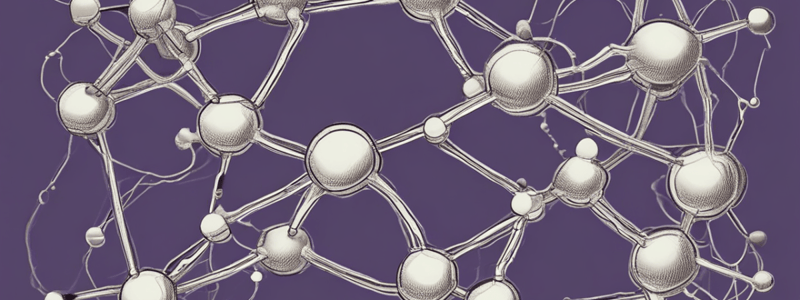Podcast
Questions and Answers
What is the expected site of addition under kinetic control?
What is the expected site of addition under kinetic control?
- The point where the HOMO is concentrated
- The point where the LUMO is not concentrated
- The point where the empty acceptor orbital is concentrated (correct)
- The point where the nucleophile is present
Why does pentadienyl (L2X) react before allyl (LX)?
Why does pentadienyl (L2X) react before allyl (LX)?
- Pentadienyl is more electron-withdrawing than allyl
- Pentadienyl has less X character than allyl (correct)
- Pentadienyl is more negatively charged than allyl
- Pentadienyl has more anionic character than allyl
What is the difference between the LX2 form of butadiene and the X2 form of ethylene?
What is the difference between the LX2 form of butadiene and the X2 form of ethylene?
- The LX2 form is more reactive than the X2 form
- The LX2 form is a less significant contributor to butadiene complexes than the X2 form is to ethylene complexes
- The LX2 form is a more significant contributor to butadiene complexes than the X2 form is to ethylene complexes (correct)
- The LX2 form is more stable than the X2 form
Why do terminal carbons of even, open ligands undergo addition?
Why do terminal carbons of even, open ligands undergo addition?
What is the condition for terminal addition to occur in an odd, open polyenyl?
What is the condition for terminal addition to occur in an odd, open polyenyl?
What is the difference between ψ2 and ψ3 in the MO picture of the allyl group?
What is the difference between ψ2 and ψ3 in the MO picture of the allyl group?
Flashcards are hidden until you start studying



